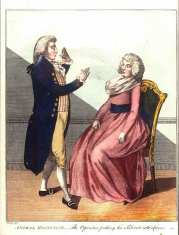These are imaginary vanities and financial fraud. In a magnet, the iron atoms are compressed together in a solid crystal, and the distance between them is only about one atom. In contrast, in the body there are only four iron atoms in each molecule of hemoglobin, and the distance between them is too great for a magnet to form
The article appeared in issue 4 (April May 2003) of the journal World of Science and Technology - Scientific American, published by Ort. Presented on the Science website courtesy of the journal editors

On August 11, 1997, an uncritical broadcast entitled "Biomagnetic Medical Therapy" was broadcast on the nightly news edition of the ABC network. A medical therapist explained during it that "magnets are a type of electrical energy, and today we believe that it has a strong effect on the body." And another man, who sells magnets for $89, declared: "All humans are magnets, each cell has a positive direction and a negative direction."
From the positive side, these magnets are so weak that they can do no harm, but, from the negative side, these magnets pull from the wallets of gullible Americans a total of about 300 million dollars a year.
The magnets are sold in a variety of forms, from coin-sized stickers to kg-sized mats. Their healing power is supposed to be unlimited, based on the assumption that magnetic fields stimulate blood flow and increase oxygen supply due to the iron in the blood.
These are imaginary vanities and financial fraud. In a magnet, the iron atoms are compressed together in a solid crystal, and the distance between them is only about one atom. On the other hand, in the body there are only four iron atoms in each molecule of hemoglobin, and the distance between them is too great for a magnet to form, this can be easily tested by pricking a finger with a piece of iron, and bringing the drop of blood close to the magnet.
And what about the claims that magnets are pain relievers? In 1997, a study was conducted at Baylor College of Medicine, in which 50 patients participated. 29 of them received real magnets and 21 fake magnets, but neither the researchers nor the patients knew at the time of the experiment which magnet each patient folded. (double-blind experiment) 76 percent of the patients in the experimental group reported pain relief compared to only 19 percent in the control group. Unfortunately, this study involved only one 45-minute treatment, did not test other methods of pain relief, did not report the duration of pain relief, and no one has since replicated its results.
Scientists researching magnetic treatment methods would do well to read the report of the King's Commission for the Study of Animal Magnetism" from 1784 (reprinted in an English translation in this way number 4, issue 3 of the journal "Skeptic"). King Louis XVI of France initiated the report to test experimentally the claims of the German doctor Franz Anton Mesmer, the discoverer of "Animal Magnetism". The investigation was carried out by Benjamin Franklin and Antoine Lavoisier, Mesmer claimed that just as an invisible force acts that attracts the iron shavings to the magnet, so the invisible force of animal magnetism acts between living beings.
The researchers began an unsuccessful attempt to magnetize themselves. In order to test the theory through negation and to show that everything is "in the head", Franklin and Boisier misled some subjects and made them think that they were being treated with the experimental method of animal magnetism, even though this was not the case, while other subjects, who received the treatment, were told that they had not been treated with it , the results were unequivocal" the phenomena were all as they caused
by the power of suggestion (suggestion) only.
In another experiment (a total of 16 different experiments were conducted), Franklin asked Mesmer's representative, Charles Diaslon, to magnetize a tree in the garden. Anyone who stands next to a tree that has been treated according to the principles and methods of magnetism must feel its influence to some extent, some even lose consciousness or experience convulsions.'' The fifth tree was the tree that was "magnetized".
One woman could feel "magnetized" water. Lavoisier filled several mugs, but only in one of them was the water apparently magnetized. After touching one of the other cups, she "went into a complete crisis" following which Lavoisier gave her a cup with "magnetized" water in it. "She drank quietly and said she felt relieved."
The committee's conclusions were that "no evidence was found for the existence of a magnetic fluid from animals, and since this fluid does not exist it has no use. All the intense phenomena observed in the treatment group belong to the field of excitement, to imagination as an asset to action and to the involuntary nature of imitation that causes us to return against our will to the things that strike our senses." In other words, the effect is mental and not magnetic.
Modern skeptics should learn from this craft of historical thinking, how to exercise control over disturbing variables and examine specific claims without resorting to unnecessary hypotheses about what is behind the "power". The sad fact is that true believers are not convinced by conflicting evidence, neither today nor in the 18th century.
*Michael Shermer is the publisher of the magazine "Skeptic" (www.skeptic.com) and the author of the book "In Darwin's Shadow".
